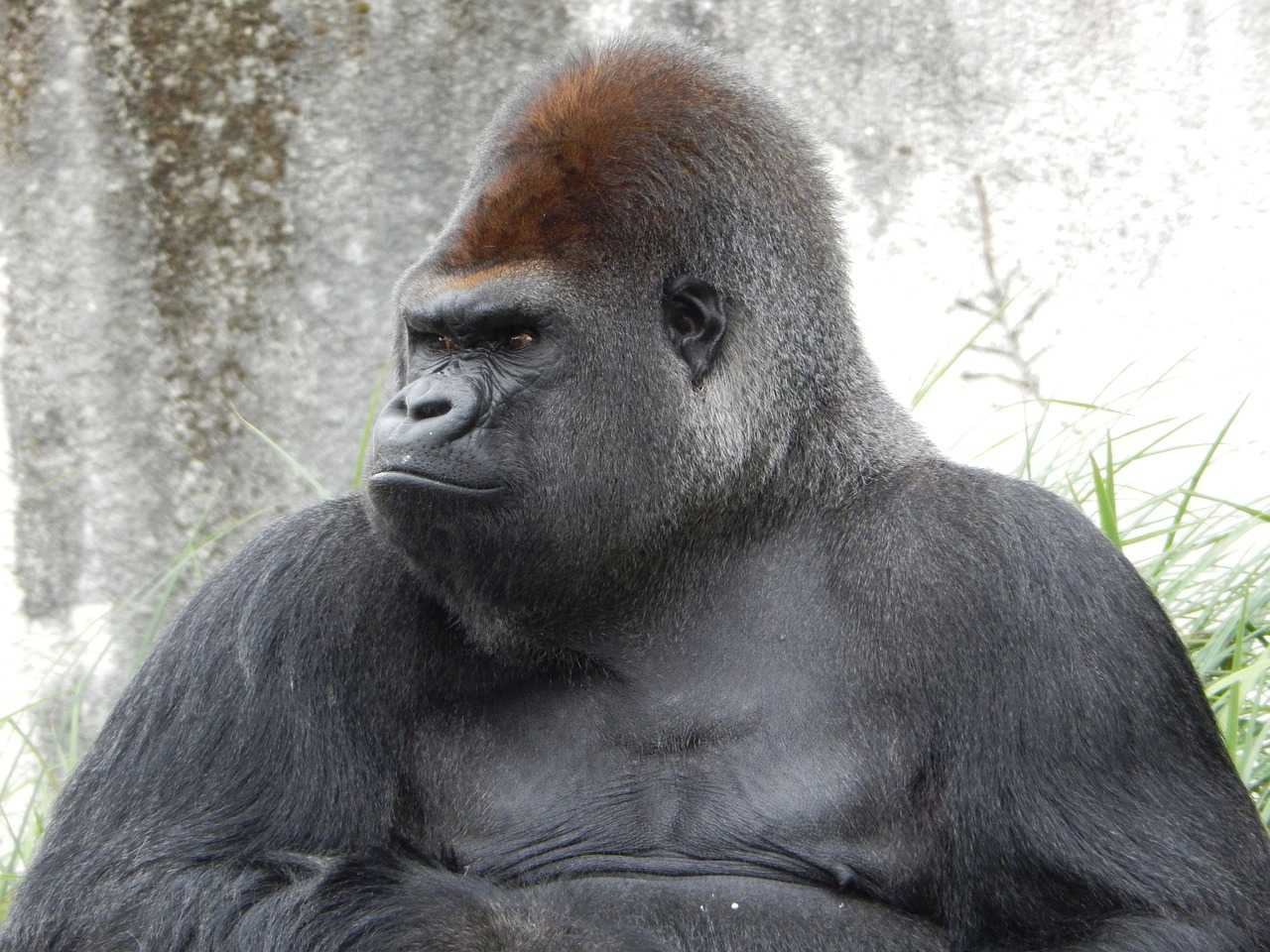
“Gorillas are gentle giants, intelligent and emotional, but they’re also threatened by us.”
Patrick Stewart
Background:
Gorillas are some of the most fascinating and intelligent primates on the planet, and we’re thrilled to have the opportunity to share some information about them with you.
First things first: what’s the difference between a gorilla and an ape? Gorillas are actually a type of ape, along with chimpanzees, orangutans, and gibbons. They are the largest living primates and are native to the forests of central and eastern Africa.
There are two species of gorillas: the eastern gorilla and the western gorilla. Within each species, there are two subspecies. The eastern gorilla is made up of the mountain gorilla and the eastern lowland gorilla, while the western gorilla consists of the western lowland gorilla and the Cross River gorilla.
Mountain gorillas are the largest and most famous subspecies, with males weighing up to 440 pounds. They are also critically endangered, with only around 1,000 individuals left in the wild. Eastern lowland gorillas, also known as Grauer’s gorillas, are similarly endangered, with only around 5,000 individuals remaining. Western lowland gorillas, on the other hand, are the most numerous subspecies, with an estimated 100,000 individuals.
Silverback gorillas are male gorillas who have reached sexual maturity and are distinguished by the silver-grey hair on their back. They are typically the dominant member of a gorilla troop and are responsible for protecting and leading the group.
Silverbacks can weigh up to 400 pounds and are incredibly strong, with the ability to lift up to 10 times their own body weight. They are also highly intelligent and have been observed using tools, communicating through complex vocalizations and gestures, and showing empathy and compassion towards other gorillas.
One of the most iconic images of silverbacks is their aggressive displays, which include charging, chest-beating, and vocalizing. These displays are meant to intimidate potential rivals and protect the troop from danger. However, despite their fearsome reputation, silverbacks are typically peaceful and only resort to aggression as a last resort.
In terms of conservation, silverbacks are critical to the survival of gorilla populations. They play an important role in maintaining the social structure of their troop and passing on valuable knowledge and skills to younger gorillas. Unfortunately, like all gorillas, silverbacks are threatened by habitat loss, poaching, and disease, and their populations are rapidly declining.
Quick Facts:
- The scientific name for the eastern gorilla is Gorilla beringei, while the western gorilla’s scientific name is Gorilla gorilla.
- Gorillas are primarily herbivores, and their diet can include over 100 different plant species, leaves, stems, and fruit. They can eat up to 40 pounds of food per day!
- Adult gorillas can stand up to 5.5 feet tall when they are standing upright, although they typically walk on all fours.
- Gorillas are social animals and live in groups called troops.
- Gorillas have very strong family bonds and can live in groups of up to 30 individuals.
- They have a gestation period of approximately 8.5 months, and typically give birth to one infant at a time.
- Gorillas are the largest living primates, with males weighing up to 440 pounds and females weighing up to 220 pounds.
- They are known for their intelligence and have been observed exhibiting problem-solving skills and tool use in the wild.
- They are typically peaceful and non-aggressive, but males can become territorial and aggressive towards other males.
- Gorillas can live for up to 35 years in the wild and up to 50 years in captivity.
- Gorillas are susceptible to many of the same illnesses as humans, including respiratory infections and heart disease.
- The majority of gorillas live in the forests of central and eastern Africa, with small populations found in zoos and wildlife sanctuaries around the world.
Fun Facts for Kids:
- Gorillas are peaceful creatures and are generally not aggressive towards humans or other animals, unless they feel threatened or their family is in danger.
- Baby gorillas, called infants, are born weighing only about 3-4 pounds, which is roughly the same weight as a small pineapple!
- Gorillas have a special patch of skin on their chests called a sagittal crest, which helps to amplify their vocalizations when they beat their chests.
- Gorillas are known for their distinctive chest beating, which is a way for them to communicate with other gorillas.
- Gorillas have very expressive faces and can use a variety of facial expressions to communicate with each other, just like humans.
- In addition to their incredible strength, gorillas are also great climbers and can easily climb trees using their powerful arms and legs.
- Gorillas have opposable thumbs, just like humans, which allows them to grip and manipulate objects with their hands.
- Gorillas have been known to use sticks as tools to help them reach food or to test the depth of water before wading in.
- Like humans, gorillas have unique nose prints that can be used to identify individual animals.
- Gorillas are known for their love of play, and they can often be seen rolling around, tickling each other, and engaging in other playful activities.
- Gorillas have been known to exhibit grief when a member of their family dies, showing that they are capable of complex emotions and social bonds.
- Some gorillas have been taught to use sign language to communicate with humans, showing that they are intelligent and adaptable creatures.
Additional Resources:









